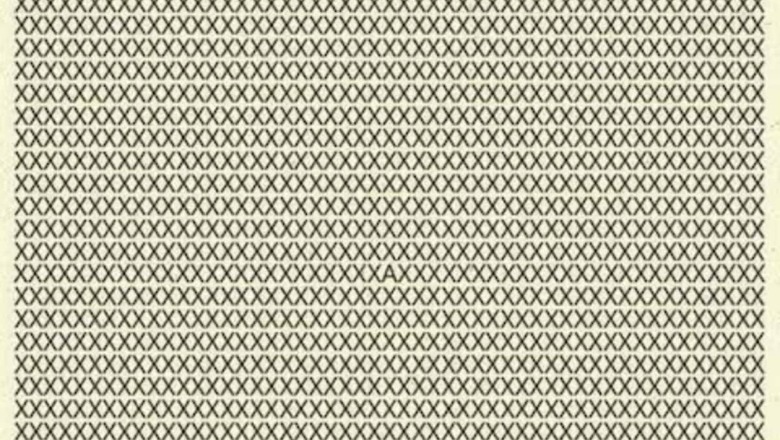
views
Optical illusions have long fascinated people, providing both entertainment and a unique way to test observational skills. Derived from the Latin word “Illudere,” meaning mocking or tricking, optical illusions play on the eyes and the mind. Beyond their entertainment value, neuroscientists have utilised these illusions to delve into the intricacies of brain function and perception of reality.
A recent viral optical illusion challenge involves finding the alphabet A hidden among a sea of Xs, presenting a fun yet intriguing test for observers.
Always in the middle or toward the bottom, usually bottom left ✨️ pic.twitter.com/a2f7eZRxtS— Dena (@mingledreamer) January 26, 2024
This latest optical illusion challenge invites participants to spot the elusive A within a pattern of X’s, adding a time constraint to intensify the challenge. The image, featuring black Xs on a light-coloured background, challenges viewers to identify the concealed A within a 5-second timeframe.
The accompanying caption adds an extra layer of intrigue, suggesting that finding the A designates one as a genius. The challenge has gained significant traction on X (formerly known as Twitter), with over 67,000 views.
To partake in the challenge, participants are urged to focus on the image and locate the hidden ‘A’ within the stipulated 5-second timeframe. The task, though seemingly simple, puts the observer’s observation skills to the test. The challenge is to quickly identify the A amid the Xs, fostering a sense of accomplishment for those who succeed.
Responses to the challenge vary, with some participants quickly identifying the hidden letter, showcasing their keen observational skills. The post has elicited comments from users expressing their success in locating the ‘A’ within the specified time frame. The challenge’s popularity lies in its simplicity yet effectiveness in engaging individuals and gauging their visual acuity.
These puzzles, beyond their amusement, serve as a valuable tool for enhancing problem-solving skills. Daily engagement with such challenges can contribute to the development of sharper observational and analytical abilities.



















Comments
0 comment